Sandalwood: Tree of Kings
18.04.2018
I shared with you a special tip for how I use Sacred Sandalwood on my third eye and under my nose for sleeping. Yet this is only one of the many benefits we discover when we use Sacred Sandalwood in our life. It also has the unique ability to keep our mind both calm, and perfectly focussed – making it a perfect oil for any type of meditation or spiritual practice.
I love how every plant has a unique story, I want to share with you the mystery and magic behind Sacred Sandalwood oil, the “Tree of Kings”, as well as its many uses.

Because trees can be known by many different names, their genus and species name is what identifies them. Santalum album is sold through Young Living under the name “Sacred Sandalwood oil”. Yet this is the true Indian Sandalwood oil, which is sometimes referred to as White Sandalwood or “Old Mountain” Sandalwood.
Being one of the most coveted oils in history, it is well deserving of the same respect given to Frankincense oil, and was indeed another of Cleopatra’s favourite oils.
In ancient Chinese and Ayurvedic practices, Indian Sandalwood was used for everything from calming and relaxing the body, to elevating one’s consciousness to enlightenment. It’s the preferred incense to burn during meditation and prayer, because it calms the mind, and at the same time allows it to remain alert.
Indian Sandalwood is also considered a sacred offering – a tool for carrying prayers to the Divine, and for creating a gateway between Heaven and Earth.
 No wonder it was prized like jade or gold and thus was held in special treasuries, and said to elevate its wearer to a Godly status!!! No King could be a King without it.
No wonder it was prized like jade or gold and thus was held in special treasuries, and said to elevate its wearer to a Godly status!!! No King could be a King without it.
“Anyone who was anyone had to possess some and to use it,” says historian James McHugh in his book, Sandalwood and Carrion: Smell in Indian Religion and Culture.
“Its wood, which was often crafted into beads, was an essential adornment both for important people and for the Gods in temples.”
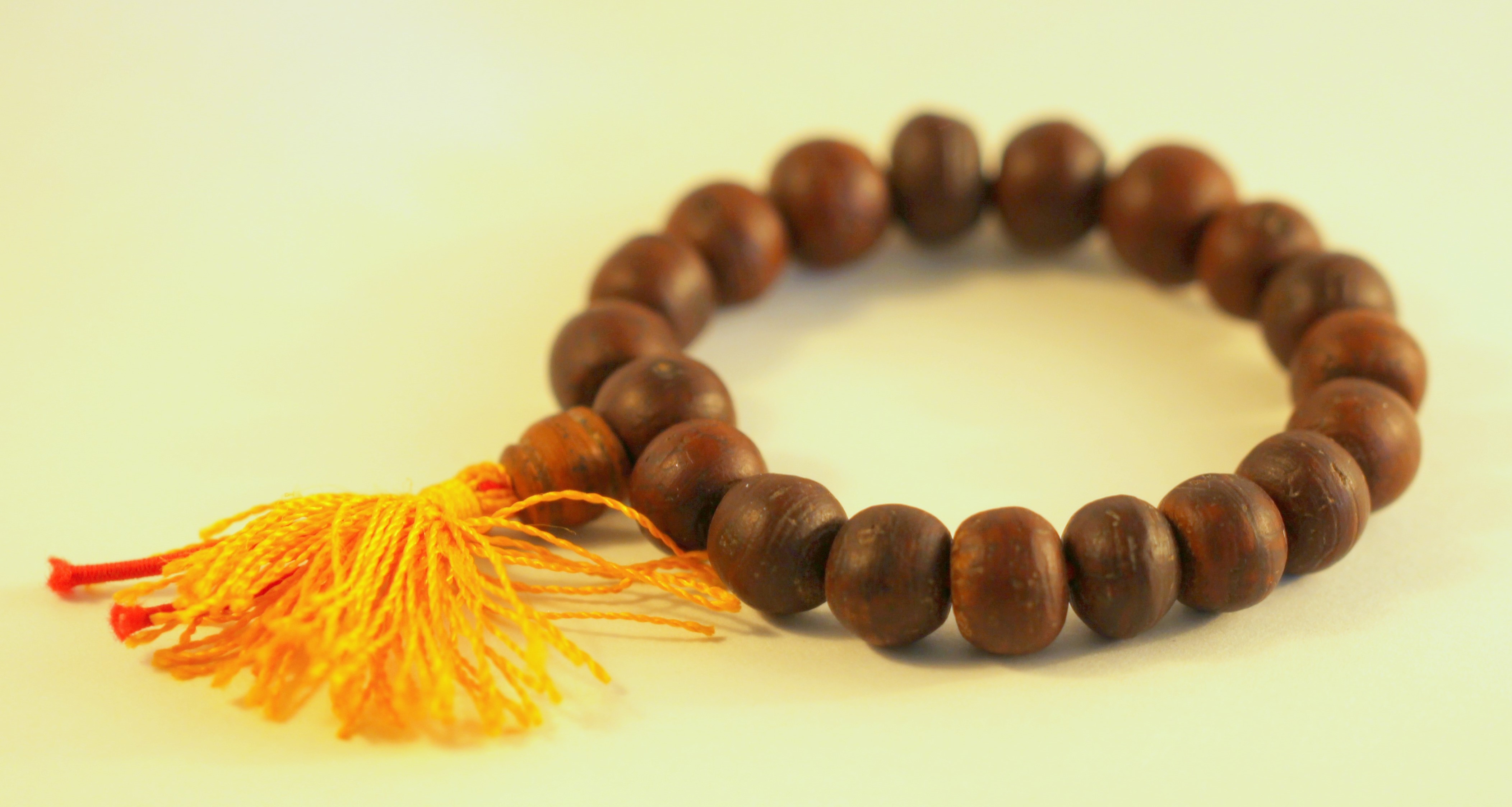
In ancient Egypt, Sandalwood oil was also used in burning rituals dedicated to their gods. Hindu statues were decorated with Sandalwood paste. And the very first known statue of Buddha from the 6th Century BC was carved out of Indian Sandalwood’s sweetly fragrant wood.
In fact, when Buddha died in 543 BC, his body was cremated on Sandalwood. Even today, Indians add Sandalwood to their funeral pyres, believing that its fragrant smoke carries the Soul to its next life.
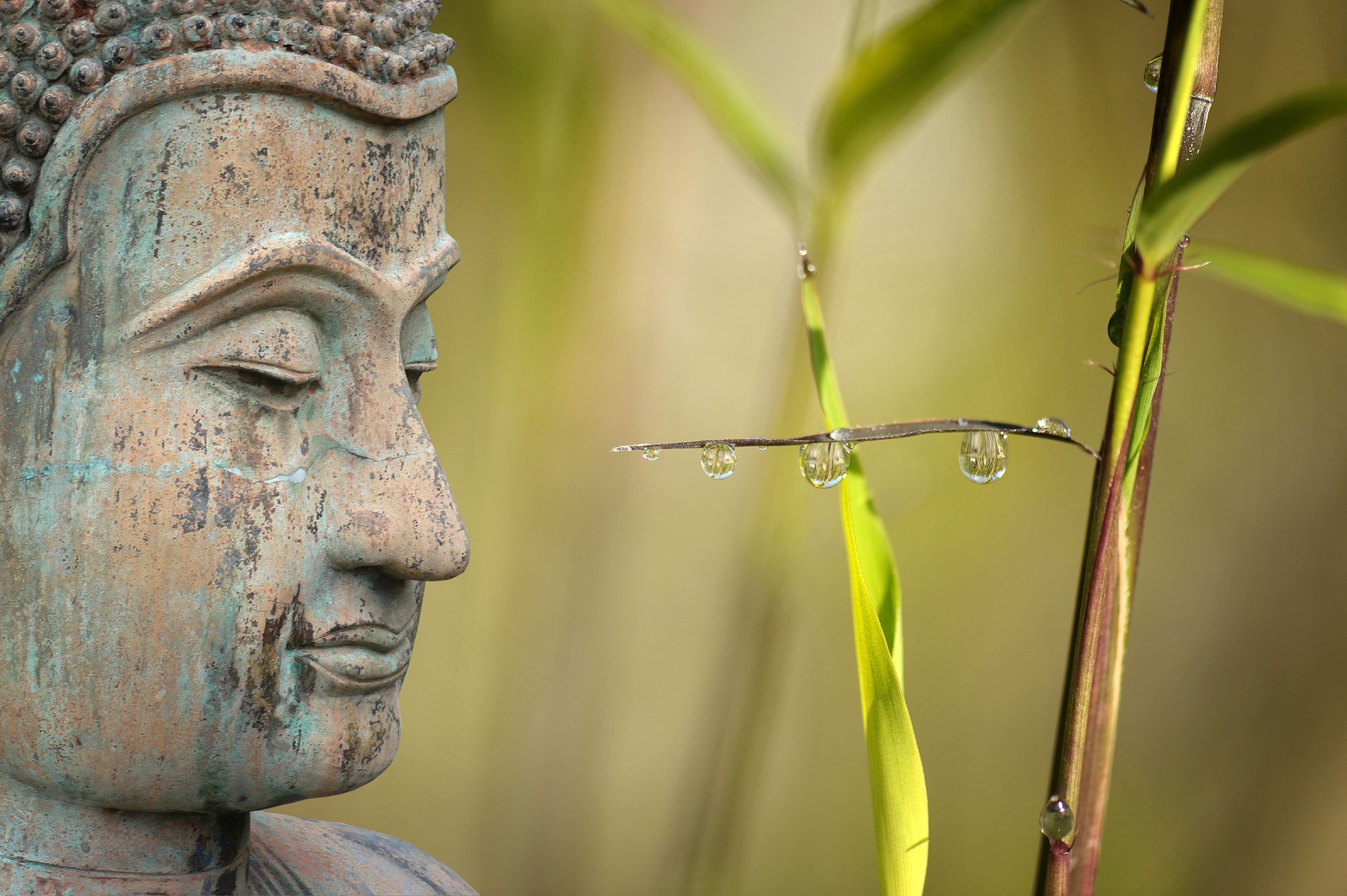
Yet Indian Sandalwood is equally as prized amidst modern French perfumers because of its luscious deep fragrance. Any good perfume will comprise a triangle of aromas. The “top notes” are what you smell first, and these are the fruitier fragrances. The middle notes are the florals. And then you have the base notes, of which Sandalwood is one. The middle and top notes stick to the Sandalwood so that the fragrance lasts the whole day. In fact it’s very much like appreciating a good wine.
Teetering on the Brink of Extinction

Back in 1792, the Sultan of Mysore declared Indian Sandalwood a Royal tree, meaning it could not be grown by ordinary people. This law still stands in India today, such that all of the Sandalwood is owned by the Government.
With the gap between supply and global demand becoming larger and larger, prices have naturally surged, and a black market worth millions of dollars was born.
In fact, it’s estimated that more than 90% of Indian Sandalwood comes from illegally harvested wood, and this has been going on for decades – not only in India, but also in Indonesia and East Timor.
Adulterated and synthesized, Indian Sandalwood is sold in bulk through black markets, with no guarantee of purity or authenticity. In fact, many products sold as Indian Sandalwood are in fact synthetic.
Today, the “Tree of Kings” teeters on the brink of extinction, being one of the most endangered plant species in the world. In fact there is only one large, commercially-sustainable Indian Sandalwood farm in the world today – and that farm is located in Kununurra, in the lush tropical north of Western Australia.

The Kununurra farm is 12,182 hectares (30,102 acres) in size, and uses a precious and rare seed source from Mysore, India. This is true Indian Sandalwood oil, not to be confused with the Australian Sandalwood species which is also grown extensively in Western Australia. The Kununurra farm works on a sustainable growth model, so that each tree that is harvested is replaced.
This is a wonderful opportunity to encourage conservation of this species through cultivation. The steady supply has the ability to ease pressure on the Indian Sandalwood trade, supplying the perfume industry and essential oil industry, at the same time helping to mitigate the devastating effects of smuggling.
How Indian Sandalwood oil is produced
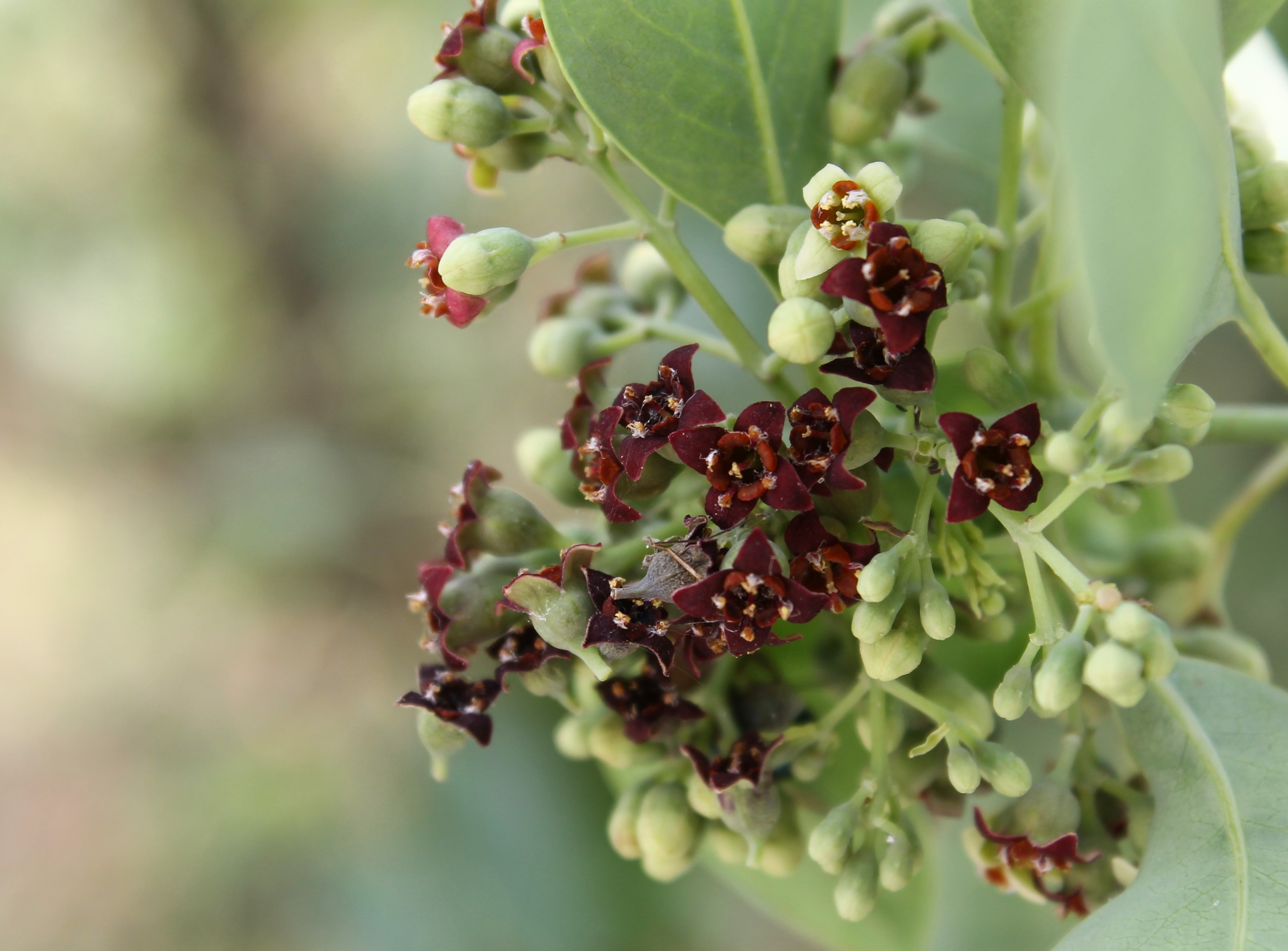 Santalum album is a very unique tree. Like the mistletoe plant, it’s hemi-parasitic, meaning that it contains some chlorophyll and is therefore capable of its own photosynthesis. Because of this, it needs a precise ecosystem of host plants in order to thrive. It builds symbiotic relationships with these host trees throughout its slow-growing life, and requires careful management to ensure it receives enough sunlight. It does not reproduce easily, and each tree must be nurtured and protected over its 15 years lifecycle in order to develop the rich, oil-bearing heartwood which delivers the deep, woody aroma of the oil.
Santalum album is a very unique tree. Like the mistletoe plant, it’s hemi-parasitic, meaning that it contains some chlorophyll and is therefore capable of its own photosynthesis. Because of this, it needs a precise ecosystem of host plants in order to thrive. It builds symbiotic relationships with these host trees throughout its slow-growing life, and requires careful management to ensure it receives enough sunlight. It does not reproduce easily, and each tree must be nurtured and protected over its 15 years lifecycle in order to develop the rich, oil-bearing heartwood which delivers the deep, woody aroma of the oil.
Producing a high quality oil requires years of study and a master craftsman – a mistake at any stage can compromise the end product.
With Sandalwood, you have to dry the wood out for the correct amount of time, and then carefully remove the bark and sapwood, leaving only the heartwood. The wood harvested from the base of the tree has different properties to the wood from the upper parts of the tree.
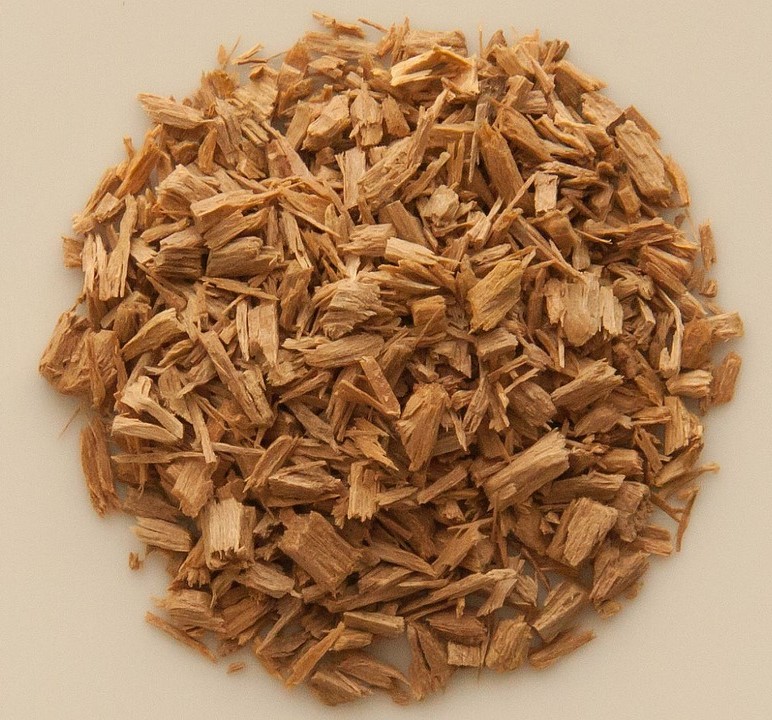 Due to this variation in properties, after the wood is processed into chips, the chips need to be analysed and mixed in order to achieve a standard product.
Due to this variation in properties, after the wood is processed into chips, the chips need to be analysed and mixed in order to achieve a standard product.
The wood chips are then steam distilled for four days, in order to obtain the highest quality essential oil.
No chemicals are used at any stage in production, in order to achieve a product of outstanding purity, and meet Young Living’s stringent requirements.
In Buddhist tradition, the “Life of the tree” (its upbringing) is said to determine the energy present in the wood. We could extrapolate that statement to the essential oil as well.
“It’s very important for Sandalwood not be mistreated,” says Jingxi (净西), a practicing Buddhist who lives in Xiamen, China. Trees that have been illegally harvested are considered tainted.
Many uses for Sacred Sandalwood oil
Sandalwood works on Physical, Emotional, Mental and Spiritual levels, helping to balance and centre us. Because Young Living is not able to make therapeutic claims about their products, I would highly recommend you do some independent research on the benefits of Sandalwood oil, through the internet and a good reference book. Here are some of the benefits we can talk about:
 1. Deep Sleep
1. Deep Sleep
In last week’s bulletin I shared about my surprise discovery when I used Sacred Sandalwood (aka Indian Sandalwood) on my third eye and under my nose before heading to bed. I had been working late for many nights in a row, which consistently affects my sleeping patterns. Yet the Sacred Sandalwood oil in these 2 locations helped me to sleep deeply and restfully, night after night….and it is suitable for use on animals and children as well.
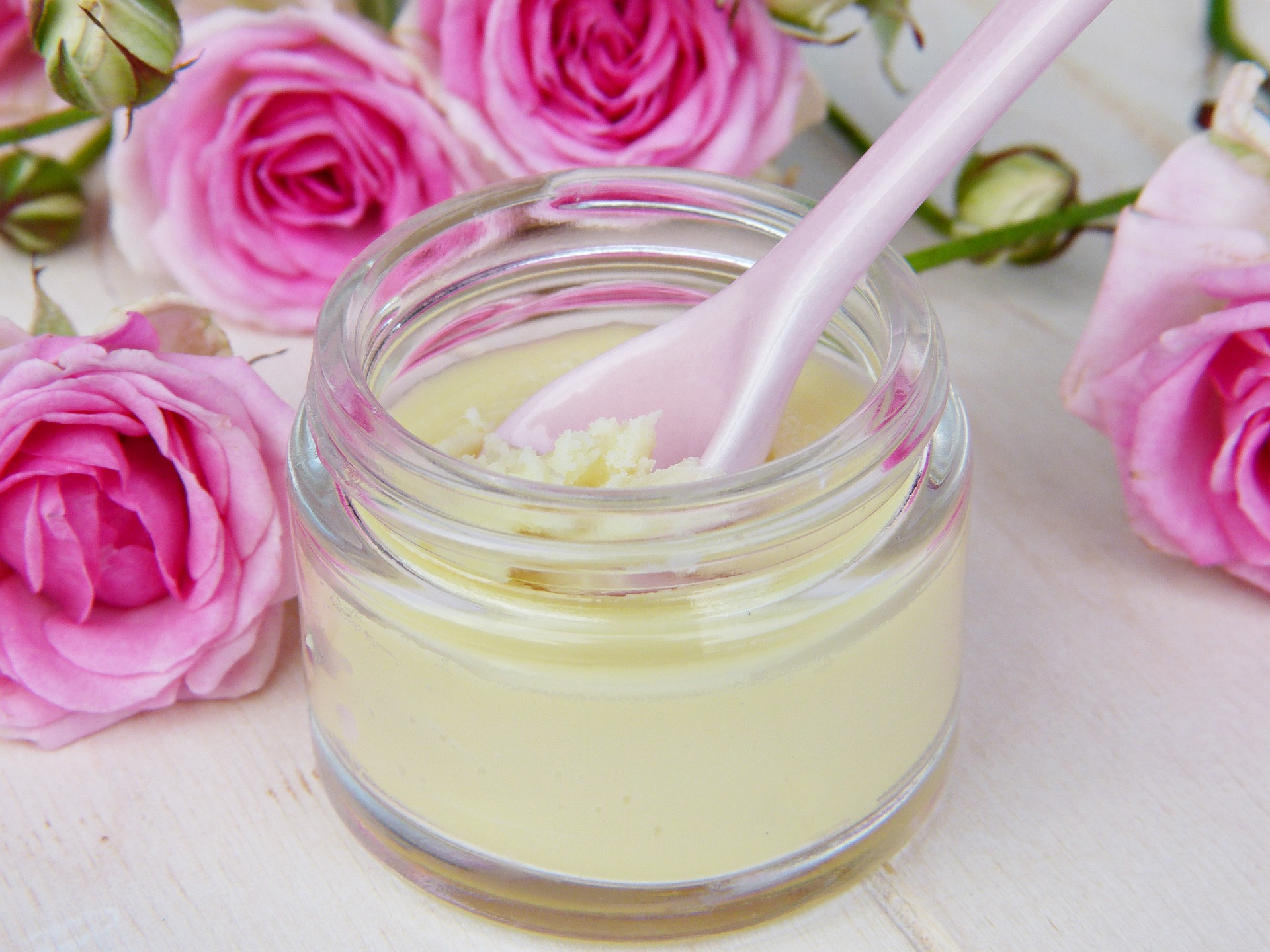 2. Skin Care
2. Skin Care
Indian Sandalwood oil has many benefits in cosmetic applications, for its effectiveness at reducing the appearance of redness and wrinkles, and evening out skin tone.Mix a drop into an all-natural moisturizer and apply to your face for 30 to 60 days. Make sure you take before and after pics!

3. Mental Alertness and Wellbeing
Remember that Indian Sandalwood not only calms and quietens the mind, it also allows the mind to remain alert and attentive. This dual benefit makes it the perfect oil for achieving a state of “flow”. In fact, studies have shown how Indian Sandalwood induces feelings of wellbeing in the body, helping to uplift moods in much the same way that meditation does.
4. Yoga, Meditation and other Spiritual Practice
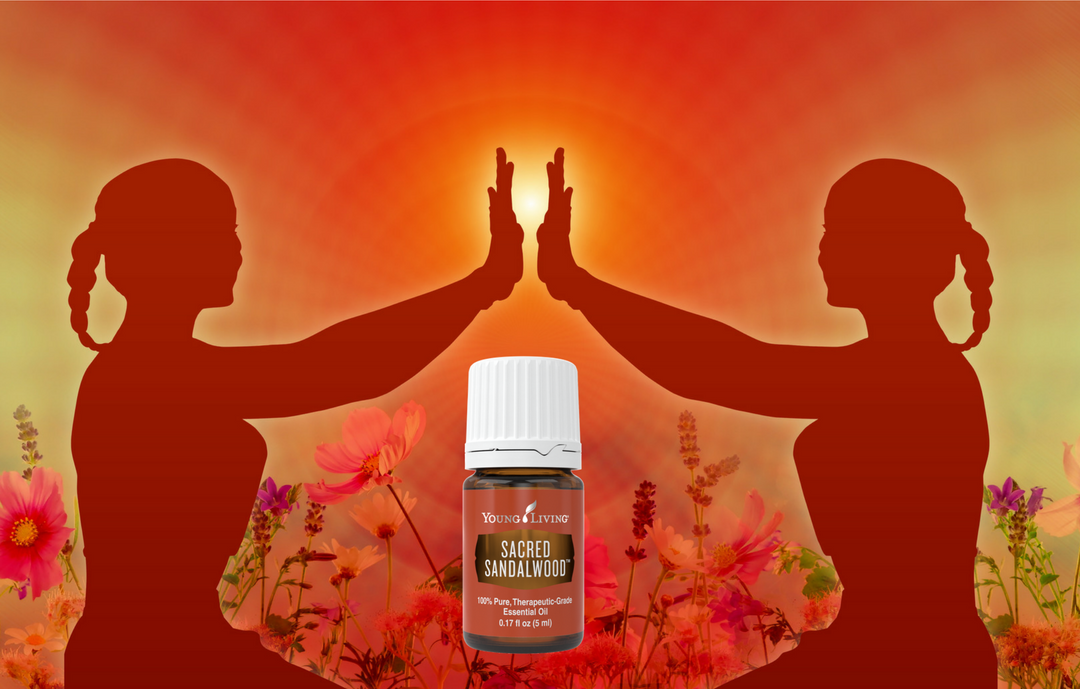
There are many ways that Sacred Sandalwood can be incorporated into your Yoga, Meditation and Spiritual Practices. Here are just a few ideas to get you started:
- Apply some Sacred Sandalwood oil to your palms, and stroke your shoulders and aura during any meditation, Savasana (“Corpse” pose in yoga), or bodywork. This will help you to travel deeper in your meditation or bodywork, accessing that very potent bridge between physical reality and spiritual ecstasy.
- Diffuse a very small amount of Sacred Sandalwood oil during your yoga practices, to help you relax and de-stress even faster from the day’s busyness. It’s lovely when mixed with a lighter oil like Stress-away, or with a mixture of Orange and Patchouli oil, or else with a combination of Bergamot, Frankincense and Lavender. Have fun experimenting with new combinations involving Sacred Sandalwood and other Young Living oils.
- Coming from the heart-wood of a tree, Sacred Sandalwood is grounding and heart-connecting. If you feel yourself losing balance and connection in your life, Sacred Sandalwood will help to centre you.
- Rub a drop of Sacred Sandalwood onto your body prior to any meditation and yoga practices. Some great locations to put it are on your: heart, temples, wrists, third eye, throat/neck. It can also be applied over the chakras to bring them into balance.
- During Reiki, Body Harmony, Theta Healing or any other spiritual healing, apply 3 drops of Valor oil under each foot (holding left hand to left foot, and right hand to right foot). Then apply a drop of Sacred Sandalwood oil to your palms, rub your palms together, and then begin your session. You’ll be amazed at how much deeper you and/or your client goes with this simple technique.
- Place a drop of Sacred Sandalwood on your palms, rub your palms together, and breathe in deeply for a few minutes. This simple exercise will calm and centre you, allowing you to switch from chest to belly breathing, thus amplifying the relaxation effects even further.
 5. Instant Calming
5. Instant Calming
Have you heard of Pavlov’s dog? In this experiment, a bell was rung every time the dog was given food. Eventually, the dog associated the sound of the bell with its food, so that it would salivate as soon as the bell was rung. We can use this experiment in a positive way with our essential oils.
If you are regularly using Sacred Sandalwood oil during your yoga, meditation and other relaxation practices, your mind will start to associate that smell with deep nurturing and relaxation.Then just through smelling the oil from the bottle, you will find yourself responding with instant calmness and relaxation in any stressful situation.
If you would love to receive our essential oils bulletin
from The Oil Temple, CLICK HERE to subscribe
If you’re not already receiving our weekly
Raw Divinity bulletin, CLICK HERE to subscribe



 Due to this variation in properties, after the wood is processed into chips, the chips need to be analysed and mixed in order to achieve a standard product.
Due to this variation in properties, after the wood is processed into chips, the chips need to be analysed and mixed in order to achieve a standard product. 1. Deep Sleep
1. Deep Sleep 2. Skin Care
2. Skin Care

 5. Instant Calming
5. Instant Calming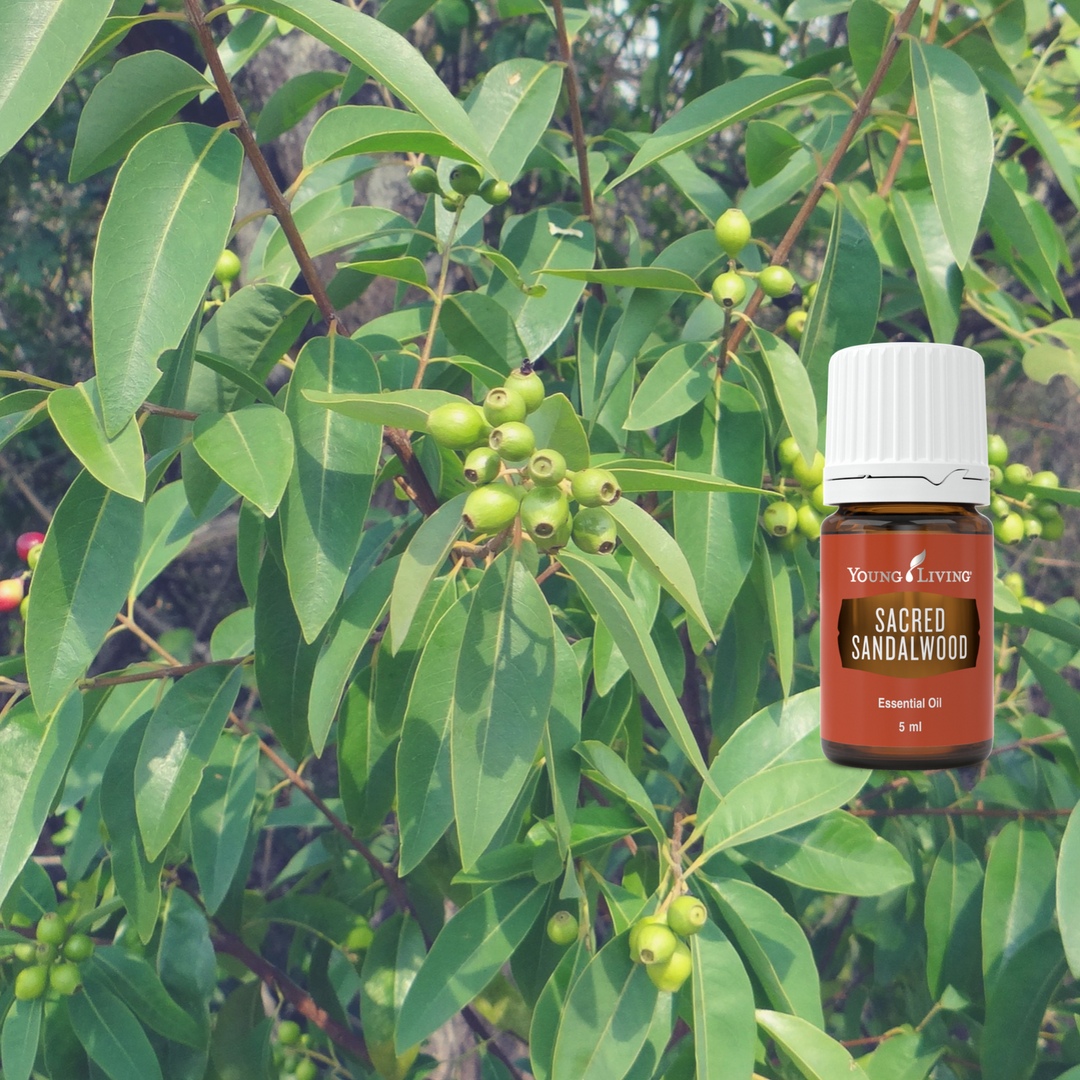

 No wonder it was prized like jade or gold and thus was held in special treasuries, and said to elevate its wearer to a Godly status!!! No King could be a King without it.
No wonder it was prized like jade or gold and thus was held in special treasuries, and said to elevate its wearer to a Godly status!!! No King could be a King without it.
 Santalum album is a very unique tree. Like the mistletoe plant, it’s hemi-parasitic, meaning that it contains some chlorophyll and is therefore capable of its own photosynthesis. Because of this, it needs a precise ecosystem of host plants in order to thrive. It builds symbiotic relationships with these host trees throughout its slow-growing life, and requires careful management to ensure it receives enough sunlight.
Santalum album is a very unique tree. Like the mistletoe plant, it’s hemi-parasitic, meaning that it contains some chlorophyll and is therefore capable of its own photosynthesis. Because of this, it needs a precise ecosystem of host plants in order to thrive. It builds symbiotic relationships with these host trees throughout its slow-growing life, and requires careful management to ensure it receives enough sunlight.